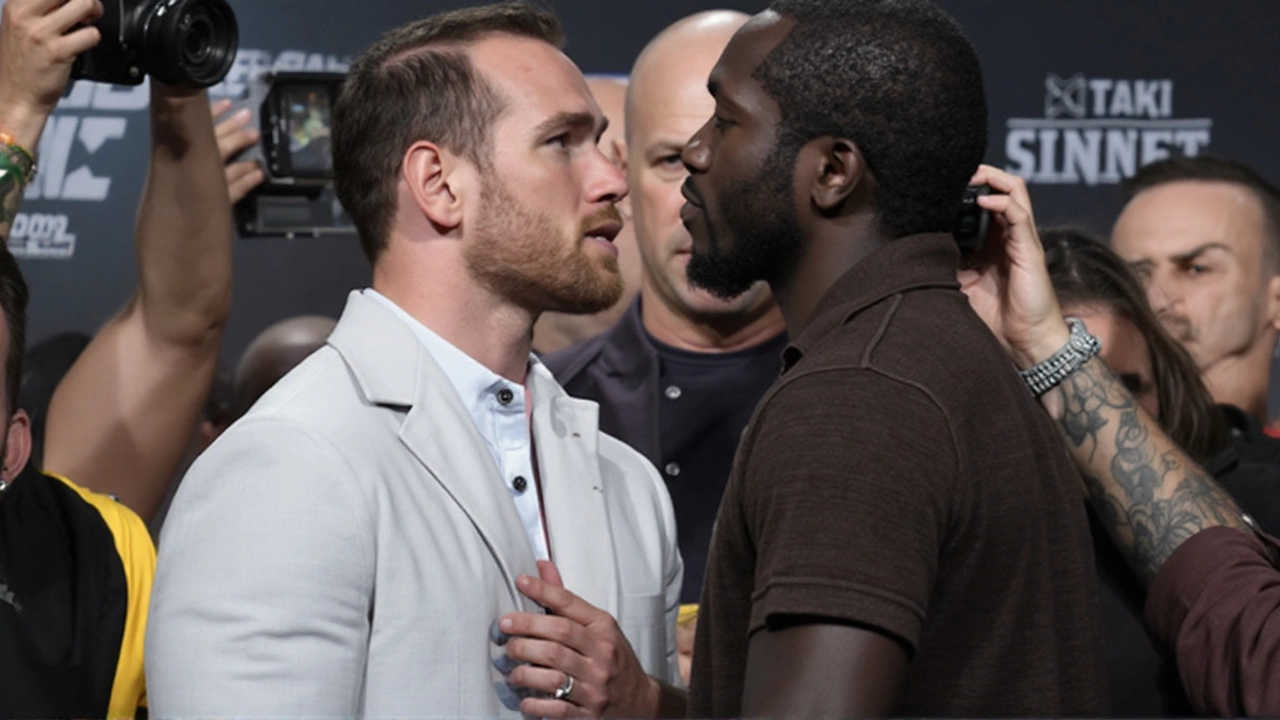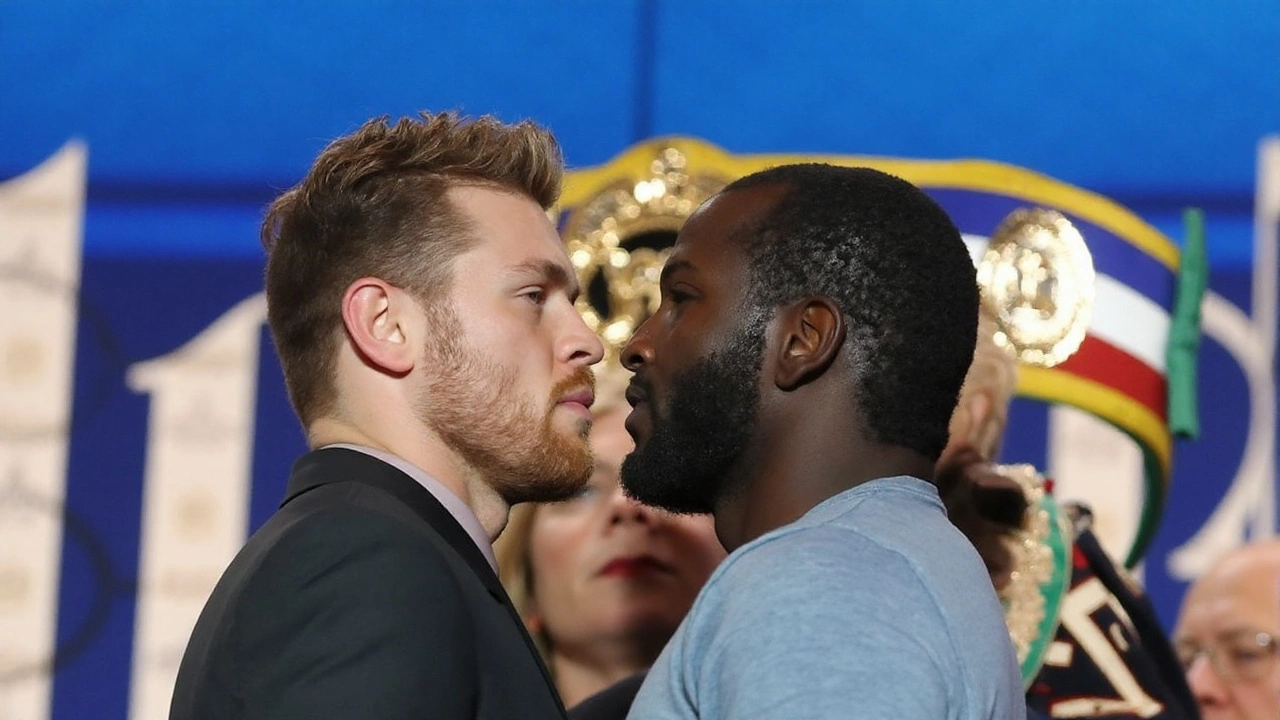The sport’s biggest star meets the sport’s most ruthless closer in Las Vegas. Canelo vs. Crawford isn’t just a champion versus a challenger; it’s a size-versus-skill test with history on the line, and it lands under the bright lights of Allegiant Stadium at 9 p.m. ET on Netflix.
Canelo Alvarez (63-2-2, 39 KOs) brings the undisputed super middleweight crown and a decade of big-fight experience. Terence Crawford (41-0, 31 KOs) brings a spotless record, a mean streak in the late rounds, and a shot at becoming the first man to claim undisputed status in three divisions in the four-belt era. They hit the scale at 167.5 pounds, right under the 168-pound limit, setting the stage for a rare champion-versus-champion clash.
That’s the headline. The subtext? Crawford is moving up two divisions to chase the biggest risk of his career. Canelo is defending his turf after tasting defeat the last time he ventured up for size, when Dmitry Bivol outpointed him at light heavyweight. Both legacies are on the line, and both know it. As Crawford told ESPN, he feels he has more to lose if the experiment fails, but a loss would also dent Canelo’s aura if the smaller man outclasses him.
What the numbers say
Start with the basics, then layer in what they actually mean in a fight like this.
- Records: Canelo 63-2-2 (39 KOs); losses to Floyd Mayweather and Dmitry Bivol. Crawford 41-0 (31 KOs), undefeated.
- Knockout rate: Crawford 75.6%; Canelo 61.9%.
- Recent form: Crawford has finished 11 of his past 12 opponents.
- Pound-for-pound (ESPN): Crawford No. 3; Canelo No. 8.
- Weigh-in: Both at 167.5 lbs for the super middleweight limit of 168.
- Physicals: Height — both listed at 5-foot-8; Reach — Crawford about 74 inches, Canelo about 70.5 inches.
- Stance: Canelo orthodox; Crawford switch-hitter (often settles southpaw).
- Gloves: At 168 in Nevada, they’ll wear 10-ounce gloves.
Those numbers hint at the shape of the fight. Crawford’s finish rate jumps late; he studies, downloads, then flips a switch. He has a longer reach, elite timing, and a habit of walking opponents into counters after they think they’ve figured him out. Canelo is the proven 168-pounder: compact, powerful to the body, and built for short, heavy combinations. His chin has handled big hitters at 160 and 168, and he’s been hard to dent even when outboxed.
The risk-reward profile is clear. Crawford’s power has carried up in the past, but carrying it from 147 (and briefly 154) to 168 is another test entirely. Canelo has lived at super middleweight for years and knows how to make bigger men feel smaller with pressure, parries, and counters downstairs. The reach gap favors Crawford, but the mass and strength edge favors Canelo.

How styles might decide it
If Canelo paints the fight, he does it with body work and ring position. Watch for him to jab to the chest, step in behind a high guard, and make Crawford reset over and over. He’ll look to cut the ring, trap Crawford near a corner, and fire short hooks and uppercuts. If the pace slows to Canelo’s rhythm — two or three heavy shots at a time, then a pause — he can bank rounds even with a lower punch output by landing the cleaner, harder shots.
If Crawford turns this his way, it’ll be with rhythm changes and angles. He’ll switch stances to mess with Canelo’s reads, use the long jab (especially as a southpaw), and score with quick counters before sliding off the center line. Expect him to jab to head and body, probe with feints, then spring counters as Canelo commits. Crawford is comfortable giving ground to set traps and then walking you down once he senses the tide shifting.
Three swing factors keep popping up in talks with trainers and fighters:
- Size management: Can Crawford hold his footing and tie up effectively when Canelo gets chest-to-chest? Inside strength could decide how the middle rounds look.
- Body investment: Canelo’s left hook to the liver is a tax collector. If he lands it early and often, Crawford’s legs and output could dip late.
- Tempo and optics: Crawford’s best friend is pace variation. Judges notice clean counters and jab control. If he steals the narrative of each round with sharp moments, he can win close frames even if he’s backing up.
There’s also the Southpaw question. Crawford may start orthodox to read the right hand and body work, then shift lefty if he sees Canelo reaching. Canelo has improved against southpaws — tight guard, patient footwork, counter right to the chest — but a switch-hitter who doesn’t repeat patterns can still make him hesitate. Hesitation feeds Crawford’s timing.
How judges see it matters. In Nevada, scoring emphasizes clean, effective punching, defense, ring generalship, and effective aggression — in that order. Crowd roars in a stadium setting can sway perception, but judges are trained to focus on impact and accuracy. If Crawford’s jab keeps popping and his counters land clean, that’s powerful on the cards. If Canelo’s shots clearly move Crawford or slow him with body damage, that’s powerful too.
Another undercard detail that’s really a main-event issue: rehydration. There’s no public rehydration cap, so fight-night weight matters. Canelo is used to putting weight back on and carrying it for 12 rounds. If Crawford’s frame holds the extra pounds without draining his engine, he’ll keep his speed and reactions — his strongest edges — into the championship rounds.
Age and miles are part of the calculus. Canelo, mid-30s, has been in high-stakes fights for a decade; he has fought punchers, movers, and giants. Crawford, late-30s, has fewer wars on his record and usually leaves opponents with sudden, decisive endings. Both have elite instincts. Neither blinks in big moments.
What to watch in the first three rounds:
- Who claims center ring? If Canelo plants early, he’s reading range and setting up the body attack.
- Which stance does Crawford pick? If he turns southpaw fast and lands the jab clean, Canelo must adjust head movement and counters.
- Do we see counters off feints? Early success there usually predicts who controls timing later.
What to watch late, rounds 8-12:
- Crawford’s surge: He often shifts gears after the halfway point. If he’s fresh, his counters will come in combinations, not singles.
- Canelo’s attrition: If the body work paid dividends, watch Crawford’s legs and clinch frequency.
- Corner cues: Eddy Reynoso (Canelo) and Brian “BoMac” McIntyre (Crawford) are excellent at live adjustments. Listen for commands about pace, jab volume, and inside tactics.
All the talk about history is real. Men’s boxing hasn’t seen a fighter go undisputed in three divisions. Crawford is trying to write that line in one night. Canelo is trying to slam the door on that chapter while adding another defense to an already stacked 168-pound run. The weigh-in made it official: the smaller man came in strong, the bigger man looked comfortable — and the math on paper still doesn’t tell you who wins when the opening bell rings.
First punch lands Saturday at Allegiant Stadium, Las Vegas. Bell time is 9 p.m. ET on Netflix. Everything after that is risk, timing, and who solves who faster.
